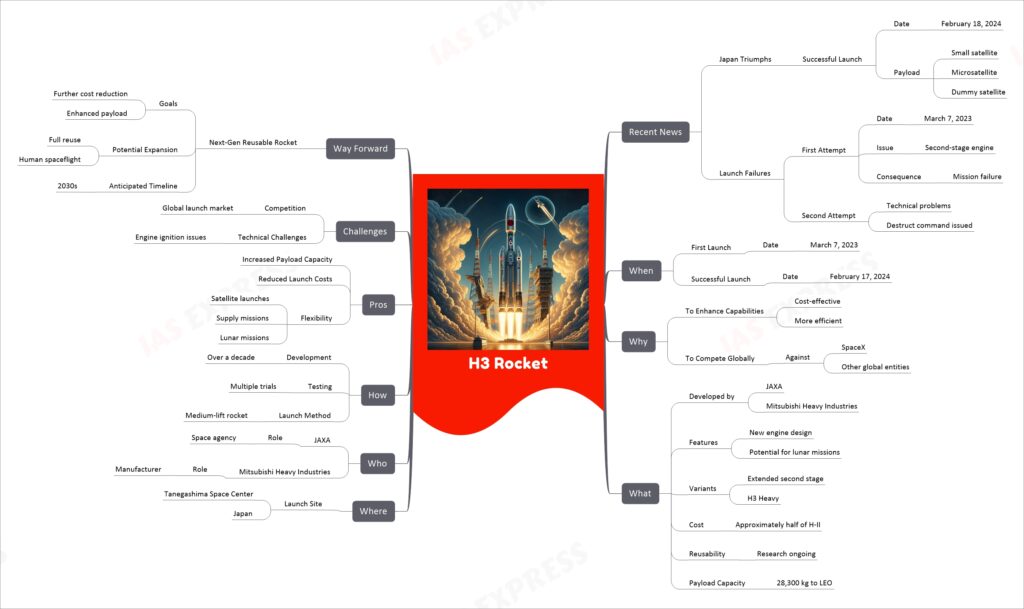H3 Rocket

The H3 rocket, developed by JAXA and Mitsubishi Heavy Industries, is Japan’s latest advancement in space technology. Its development spanned over a decade, facing challenges including a failed first launch in March 2023 due to second-stage engine issues, and a subsequent failed attempt. However, it achieved success on February 18, 2024, launching a small satellite, a microsatellite, and a dummy satellite. This rocket is designed for efficiency and cost-effectiveness, aiming to halve the launch costs compared to its predecessor, the H-II rocket. The H3 is flexible, capable of launching satellites, supplying space stations, and supporting lunar missions. Future plans include developing a next-generation reusable rocket as part of Japan’s space policy, aimed at further reducing costs, increasing payload capacity, and potentially supporting human spaceflight by the 2030s.

